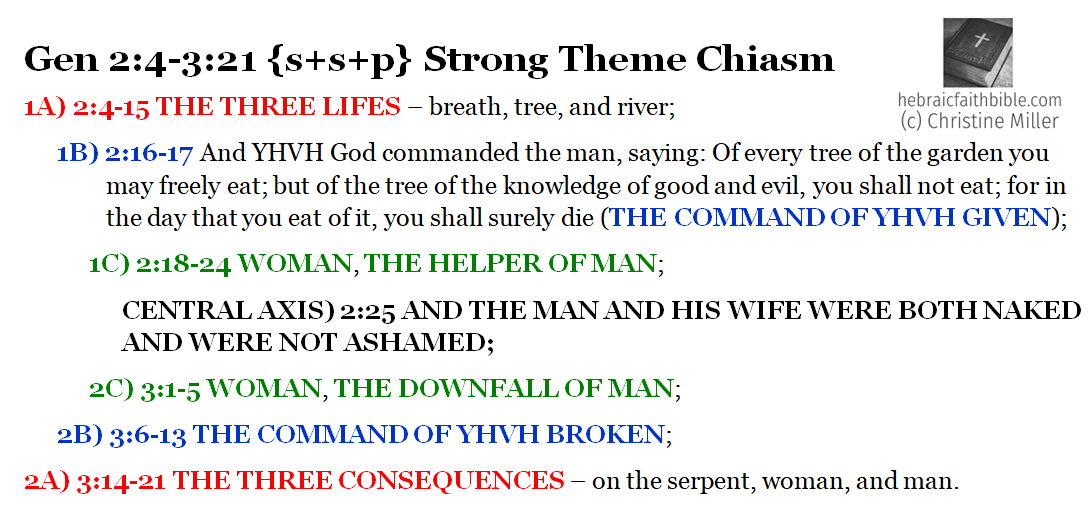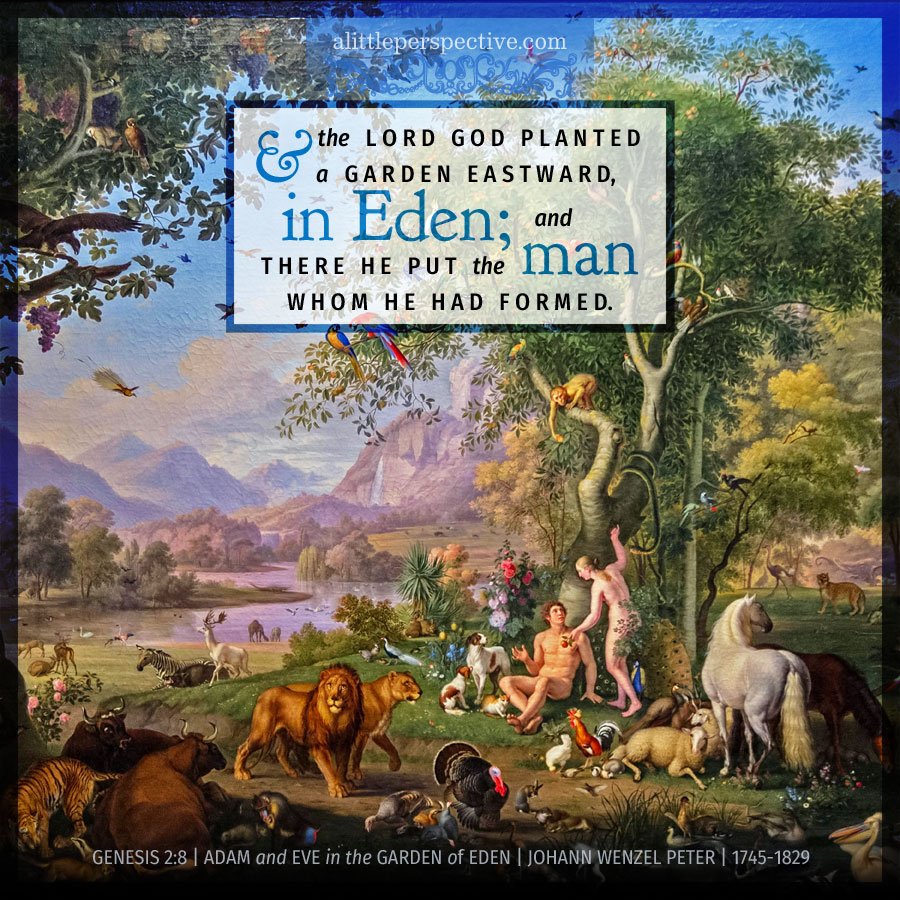Read Genesis 2:4-3:21 at Bible Gateway.
Hebrew paragraph divisions
2:4-3:15 {s} Disobedience to YHVH’s command is sin
3:16 {s} Consequences for the woman (painful toil)
3:17-21 {p} Consequences for the man (painful toil)
We have already seen that the annual and triennial Torah readings divide from week to week at Hebrew paragraph divisions. We have seen that the paragraph divisions reveal the chiastic structures. We have seen both the annual and the triennial Torah readings form their own complete larger chiastic structures. We have seen that usually each paragraph by itself also forms its own smaller chiastic structure. I have also seen that each separate strong theme, no matter how many weak paragraphs are within it, also usually forms its own chiastic structure. So woven throughout Scripture is a uniquely elegant pattern of greater and smaller and overlapping chiastic structures, which separate at the Hebrew paragraph divisions, the triennial and annual Torah readings, AND the strong {p} paragraph markers. Whew!
See Finding the Strong Themes of Scripture (using Gen 1:1-6:8, annual Torah portion Beriesheet, as an example) for more.
Chiastic structure

Download the Gen 2:4-3:21 fully expanded chiasm.
Hebrew root word parables
And they were both naked, the man and his wife, and were not ashamed. Gen 2:25, Central axis of the chiasm
To be ashamed is Strong’s H954, בוש buwsh, a primitive verb. The 3-letter root is bet + vav + shin.
bet ב = house, thus house, household, family, in, within
vav ו = tent peg, thus add, secure, hook
shin ש = two front teeth, thus sharp, press, eat, two, again
Shin often has the meaning of a blowing wind, as the sound air makes when expelled through the teeth, is the sound of a blowing wind. Thus the verbal root literally means “to wither,” or “to dry up,” because when moisture is removed from the earth, as it is when the wind blows over the land, plants wither and dry up. As they do so, they shrink. The concrete object is “genitals,” because genitals shrink when the blood is drained from them. So the abstract concept is “shame,” as when the blood drains from our faces and we become pale.
The parable comes from its first use in Scripture:
And they were both naked, the man and his wife, and were not ashamed. Gen 2:25
The first family (bet) were secure (vav) together (shin, in the sense of both the man and his wife, two). The parable is actually telling the story of not being ashamed. To be ashamed is not to be secure.
This second strong theme of Genesis relates the progression from being naked and yet secure, unashamed, to hiding in shame because of sin, and being clothed with an animal skin so that our nakedness is not seen. Adam and Eve were clothed, that is, covered, kapporeth, because a lamb (or livestock from the flock or herd) was slain to provide covering for them.
And what can we learn about our Father God from this incident?
“He who covers a transgression seeks love.” Pro 17:9.

















Leave a Reply